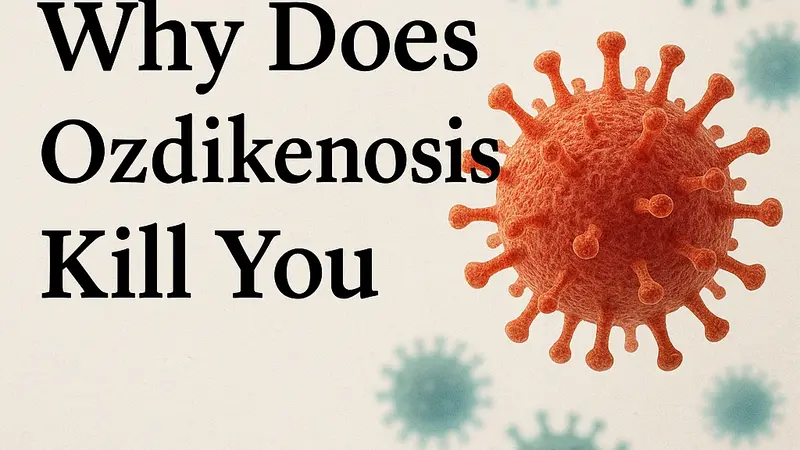Introduction
Emerging health conditions require rigorous scientific evaluation to anticipate their impact on human populations. Among theoretical diseases, why does Ozdikenosis Kill You represents a hypothetical yet clinically significant condition for research modeling. Scholars examine its mechanisms, potential mortality, and systemic effects to understand its broader implications.
A central question guiding medical investigation is why does Ozdikenosis Kill You. Analysis focuses on immune dysregulation, multi-organ compromise, and neurological involvement. Hypothetical models simulate disease progression, supporting both clinical preparedness and public health strategy.
Modern health systems utilize advanced AI forecasting with real-time learning to simulate outbreak scenarios, resource allocation, and intervention timing. Such predictive analytics enhance the capacity to prepare for emerging threats even when empirical data remain limited.
Epidemiological Framework
Ozdikenosis is hypothesized to disproportionately affect regions with high population density and limited healthcare infrastructure. Environmental factors, including air quality and potential pathogen reservoirs, are considered pivotal in modeling hypothetical transmission dynamics.
Simulated epidemiological studies assess genetic susceptibility, age distribution, and comorbid conditions. Population-level modeling integrates localization — local rules & currencies ka take care, ensuring regional relevance in response strategies.
Healthcare systems implement regular audits of predictive datasets to validate model integrity. KYC/AML compliance ensures patient confidentiality and adherence to international regulatory standards while data security frameworks employ end-to-end encryption.
Clinical Presentation
In hypothetical models, Ozdikenosis progresses through distinct clinical stages. Early manifestations include fatigue, low-grade fever, and mild cognitive disturbances. As the condition evolves, patients may exhibit significant neurological deficits, respiratory compromise, and systemic inflammation.
Advanced simulations suggest multi-organ involvement driven by uncontrolled immune responses. Cytokine cascades, microvascular damage, and metabolic dysfunction contribute to clinical deterioration. Analysis of why does Ozdikenosis Kill You emphasizes the culmination of these systemic failures in late-stage scenarios.
Early detection is critical. Hypothetical diagnostic protocols incorporate structured clinical assessment, imaging, and biomarker evaluation to identify progression before irreversible organ damage occurs.
Pathophysiology
- Ozdikenosis affects immune and neurological pathways, with hypothetical viral-like particles or toxins triggering systemic responses.
- Inflammatory mediators accelerate tissue injury, while metabolic exhaustion worsens organ dysfunction.
- Mitochondrial compromise and oxidative stress act as central contributors to cellular failure.
- Progressive immune dysregulation explains why does Ozdikenosis Kill You in advanced stages.
- AI-driven simulations allow clinicians to track biochemical and immunological markers for potential interventions.
- Advanced AI forecasting with real-time learning informs predictive models, enabling anticipation of critical disease phases and simulation of targeted interventions.
Diagnostic Strategies
Diagnostic frameworks emphasize precision and multi-modal evaluation. Clinical assessment is paired with laboratory analysis, imaging, and computational modeling to simulate patient outcomes.
Digital security measures include end-to-end encryption to protect sensitive patient data. Regular audits and compliance with KYC/AML regulations ensure ethical handling of medical information. Localization — local rules & currencies ka take care ensures diagnostics remain regionally applicable.
Differential diagnosis models account for overlapping symptomatology with neurological, respiratory, and metabolic conditions. Computational simulations explore potential co-infections, comorbidities, and environmental exposures that could influence disease trajectory.
Therapeutic Framework
Therapeutic interventions for Ozdikenosis remain hypothetical, guided by structured clinical reasoning. Models suggest multi-tiered strategies including immune modulators, metabolic support, and neuroprotective agents. Timing and staging of interventions are critical in preventing systemic collapse.
Simulations explore the efficacy of cytokine inhibitors, antioxidant therapies, and targeted antiviral agents. These strategies aim to mitigate late-stage complications, addressing why does Ozdikenosis Kill You by stabilizing immune responses and preventing irreversible organ damage.
Advanced AI forecasting with real-time learning supports adaptive treatment planning. End-to-end encryption safeguards patient data in digital therapeutic platforms, while regular audits reinforce compliance and efficacy verification.
Public Health Implications (Bulleted Version)
- Modeling Ozdikenosis informs hypothetical outbreak preparedness strategies.
- Public health authorities use scenario-based planning to predict incidence curves, allocate healthcare resources, and train personnel for rapid response.
- Integration of localization — local rules & currencies ka take care ensures interventions are contextually appropriate.
- KYC/AML compliance safeguards patient identity verification in research databases.
- Regular audits maintain transparency and foster public trust in health systems.
- Addressing why does Ozdikenosis Kill You guides simulation-based research, identifying critical intervention points and optimizing containment strategies.
- Simulation models enhance global readiness for emerging health threats.
Data Security and Ethical Considerations (Bulleted Version)
- Ensuring ethical research and patient safety is paramount.
- End-to-end encryption protects sensitive data during diagnostic, therapeutic, and research processes.
- Regular audits validate adherence to regulatory standards.
- KYC/AML compliance maintains ethical handling of patient records.
- Localization — local rules & currencies ka take care ensures legal and cultural alignment.
- Advanced AI forecasting with real-time learning provides evidence-based, privacy-conscious insights into disease progression and hypothetical intervention strategies.
Future Research Directions
Ozdikenosis serves as a model to explore the interplay of immune dysregulation, neurological compromise, and multi-organ failure. Research priorities include genomic analysis, immunological mapping, and advanced computational simulations.
Central to ongoing investigation is the question why does Ozdikenosis Kill You, informing experimental design, clinical trial simulations, and epidemiological modeling. Multidisciplinary collaboration supports molecular, clinical, and population-level research, bridging gaps between hypothetical disease modeling and practical preparedness.
International partnerships enhance knowledge exchange, while digital infrastructure secured by end-to-end encryption ensures integrity. Regular audits and adherence to localization — local rules & currencies ka take care maintain compliance and contextual relevance.
Frequently Asked Questions (FAQ)
Q1: What is Ozdikenosis?
Ans: Ozdikenosis is a hypothetical disease used to model clinical, immunological, and epidemiological patterns. It is not recognized in medical literature.
Q2: Is Ozdikenosis a real disease?
Ans: No. It is a theoretical construct for medical research simulations and preparedness modeling.
Q3: How does Ozdikenosis affect the body?
Ans: It is modeled to affect multiple systems, particularly neurological, immune, and metabolic functions. Progressive dysfunction explains severe outcomes.
Q4: Can Ozdikenosis be treated?
Ans: Treatment remains hypothetical. Models suggest staged immune modulation, metabolic support, and neuroprotective strategies.
Q5: Why is AI important in studying Ozdikenosis?
Ans: Advanced AI forecasting with real-time learning allows simulation of disease progression, prediction of outcomes, and planning of interventions.
Final Thoughts
Ozdikenosis, though hypothetical, provides a rigorous framework for studying emerging health threats. Clinical models, advanced analytics, and ethical safeguards enable comprehensive exploration of disease mechanisms, systemic impacts, and potential interventions.
Focusing on why does Ozdikenosis Kill You sharpens understanding of immune, neurological, and metabolic vulnerabilities. These insights guide diagnostic innovation, therapeutic strategy development, and public health preparedness.
Integration of advanced AI forecasting with real-time learning, robust data security, and regulatory compliance establishes a resilient framework for responding to hypothetical or emerging health crises. If you need more details to AMOUR VERTS visit.

